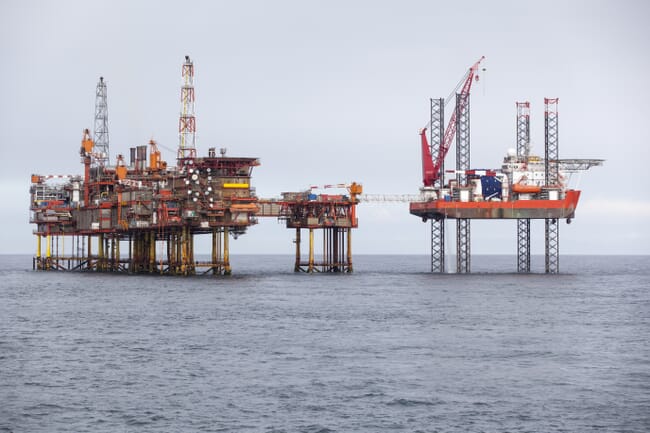A survey of international environmental experts suggests that attitudes to the decommissioning of offshore infrastructure, such as oil platforms, have shifted. Almost 95 percent of the experts, drawn from 10 nations across academia, government and industry, believe that a more flexible, case-by-case, approach to equipment removal would be better for the environment.

Obsolete offshore infrastructure, including oil and gas platforms and wind turbines, must be removed in most regions of the world once they reach the end of their productive lives. Yet the practice has potential large-scale environmental impacts, including the loss of biodiversity and destruction of sea-bed habitat. More than 7500 offshore oil and gas platforms in 53 countries will become obsolete in the next few decades, with eventual removal of rapidly growing wind turbine infrastructure a looming issue.
Although the study focuses on the North Sea, a current hot-spot of removal activity, the authors say the results have global implications given the distribution of offshore structures. In contrast to current regulations, partial removal options were considered by the experts to deliver better environmental outcomes than complete removal for platforms; both approaches were equally supported for wind turbines.
Dr Ash Fowler, lead author of the study, published in Frontiers in Ecology and the Environment, says that current removal policies are based on the assumption that “leaving the seabed as you found it” is the best way to minimise environmental impacts. These policies, however, do not take into account that over their 20-30 year lifetime, offshore structures often develop into artificial reefs, with high biodiversity and they come to form a part of the ecosystem around them on which a wide range of species may depend.
“These structures are huge and removing them is complex and costly. Our findings indicate that here is a big gap between existing policy and current knowledge of decommissioning impacts,” he says.
Dr Fowler, a fish ecologist and associate of the University of Technology Sydney, who has been investigating the environmental issues around aging offshore infrastructure for the past ten years, says the study was undertaken to guide best decommissioning practice.
David Johns, Head of the Continuous Plankton Recorder Survey at the Marine Biological Association and co-author of the paper, said there were multiple factors to take into account when looking at removing these structures.
“It’s clear that there needs to be a case-by-case evaluation, with sufficient monitoring and investigation of the structure and surrounding region. These sites can become refuges for many under threat organisms, and help to re-populate the locale - and the physical presence of a sub-sea structure limits fishing effort in the local area.”
On the basis of the findings, the authors make a series of recommendations to guide the revision of current North Sea decommissioning policy, including:
- A temporary suspension of obligatory removal of obsolete offshore infrastructure to allow more research into their environmental impacts.
- Allowing partial removal based on environmental considerations, followed by monitoring.
- Consideration of the ecosystem services provided by offshore structures when considering removal.
- Development of a comparative assessment framework based on optimising decommissioning decisions based on net environmental benefit.


